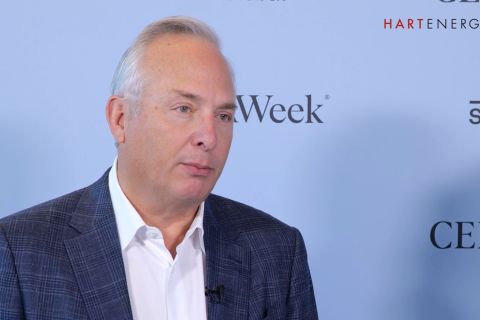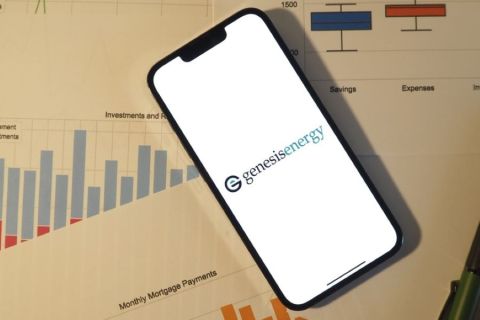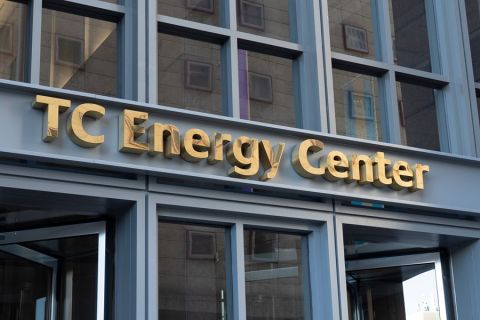Jordan Blum, editorial director, Hart Energy: How does the energy sector solve its workforce challenges? We're here at the Kay Bailey Hutchinson Energy Center Symposium in Austin, [Texas] to find out.
I'm joined for this Hart Energy Live Exclusive interview with Corby Robertson, the CEO of Quintana [Resources]. Thank you so much for joining us. Really appreciate it. If I could just get you to weigh in on just kind of why you feel it's so important to be a part of the Energy Center and participate in the symposium today.
Corby Robertson Jr., CEO, Quintana Resources: Well, the University of Texas, of course, is our flagship university for the state of Texas. Texas is the number one energy producer in the United States and I don't know, maybe five or six in the world. And so this is a world-class university and it's turning out great students and the more we can educate them and get them information that will guide their lives and careers, the better for all of us.
JB: Very good. So how important and what do you see as the focus of the work being done here to solve the workforce challenges of the energy sector and the so-called great crew change to come or that's already happening?
CRJ: What we have here is an all-of-the-above strategy that has been well articulated by the panelists. I'm just one of the panelists, but there's a lot of good information that's been shared with a group of 415 or so participants from industry, from the university, and of course the students themselves that hopefully will launch careers around some of these markets to serve.
JB: Very good. And what do you see as, I guess, being a little bit more particular, the biggest workforce challenges that do need to be solved, the gaps that need to be filled and the solutions to come?
CRJ: There is an awful lot of angst about whether fossil fuels are going to be having a permanent career. And as trillions of dollars have been spent around the world that have dropped the energy participation from 85% of our serving markets to 82%, I have every confidence that the fossil fuel industry is here to stay. And the challenge that this generation has is to clean it up.
JB: Very good. And do you see that as a kind of a motivating factor for the next generation?
CRJ: I think it's a motivating factor for our society, and I'm certainly the older generation now, but my children and grandchildren, I'm expecting they will carry on with vigor to succeed.
JB: Very good. And with Quintana, obviously there's mineral rights and lots of gassy areas. There's lots of LNG build out happening now. Kind of the next wave of U.S. LNG. How do you see that impacting gas demand for the long term here?
CRJ: Well, the oil market has been a global market practically since I was born. Of course, we've been importing oil forever through LNG. When they first built the terminals, we were going to be importers. Then the shale revolution came along and they switched them around and we became exporters. And so now as we add export capacity, the global market for gas is becoming very much like the global market for oil in that serving the markets in Asia and Europe and the United States all are going to be price sensitive to each other. We certainly have got more capacity to produce right now in the United States. And so increasing our LNG certainly is something to be good for America and frankly, it'll be good for the world.
And the U.S. as a supplier certainly is a lot more stable than Russia. China, of course, is in need of importing all these resources, and so is India and some of these other very populous countries that have great energy needs. And there's 1.4 billion people on this earth that don't have energy resources and abundant electricity that's available to them. So we think that there's a global imperative to reach out to the world and share those shale resources that have been defined here in the United States.
JB: Very good. Now obviously you have a lot of experience in minerals and mining. Do you see the U.S. eventually emerging as more of a major player for lithium mining and critical materials extraction?
CRJ: Yes. I believe that there is lithium that can be economically mined in the United States, frankly. We have projects that we're involved with with taking lithium out of saltwater brine. And there's some in Texas, there's some in Arkansas, there's some in Pennsylvania. So I guess we did some work in North Dakota defining some rare earth and lithium in North Dakota. So there are places around the United States that have got some, they just recently had a big discovery, I think, on the border of Washington and Oregon and some big crater that has a very large resource. It will be hard to permit, and particularly in the saltwater brine, they're already in Arkansas offsetting some of our interest there and producing bromide out of salt water. So it's not crazy to think that you take it to the next step, in addition to getting bromide to get lithium.
JB: Is that a natural growth area for the legacy U.S. energy sector, potentially?
CRJ: We are completely dependent upon imports for lithium. To the extent that we want batteries, to the extent that we want solar panels, to the extent that we want to have a transition into these renewables, these other materials are essential. And so we produce a small percentage of our copper, practically no percentage of our lithium, no percentage of our cobalt, no percentage of our rare earth. All of those things are needed and we think that other new supply needs to come on.
JB: It's going to be fascinating to watch play out.
CRJ: Well, there's been through the IRA a lot of focus on how do we create domestic battery production, how do we create domestic supply for some of these minerals? And whether the permitting and the NEPA goes with it remains to be seen. It's a challenge with some of this permitting in the United States.
JB: We'll see. Well, thank you so much for joining us here at the KBH Energy Center for this Hart Energy Live Exclusive interview. For more information, please read and watch online at hartenergy.com.
Recommended Reading
CorEnergy Infrastructure to Reorganize in Pre-packaged Bankruptcy
2024-02-26 - CorEnergy, coming off a January sale of its MoGas and Omega pipeline and gathering systems, filed for bankruptcy protect after reaching an agreement with most of its debtors.
Canadian Natural Resources Boosting Production in Oil Sands
2024-03-04 - Canadian Natural Resources will increase its quarterly dividend following record production volumes in the quarter.
Bobby Tudor on Capital Access and Oil, Gas Participation in the Energy Transition
2024-04-05 - Bobby Tudor, the founder and CEO of Artemis Energy Partners, says while public companies are generating cash, private equity firms in the upstream business are facing more difficulties raising new funds, in this Hart Energy Exclusive interview.
Genesis Energy Declares Quarterly Dividend
2024-04-11 - Genesis Energy declared a quarterly distribution for the quarter ended March 31 for both common and preferred units.
TC Energy Appoints Sean O’Donnell as Executive VP, CFO
2024-04-03 - Prior to joining TC Energy, O’Donnell worked with Quantum Capital Group for 13 years as an operating partner and served on the firm’s investment committee.





